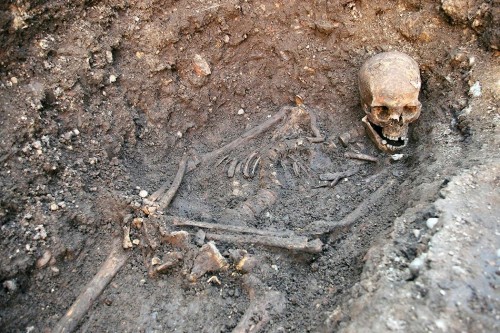#forensic archaeology
Smithsonian Magazine. “Researchers Find Potential Evidence of Oldest-Known Mummification”
““These practices would…underscore the significance of the burial places and the importance of bringing the dead to these locations in a manner that contained and protected the body, following principles that were culturally regulated,””
*CW: Depictions of skeletal and mummification of human remains.
How Forensic Techniques Aid Archaeology
- by Diana Valk
“In 2012, archaeologists discovered the skeletal remains of an adult male buried under a car park in Leicester, England. Using DNA evidence, they were able to confirm the identity of the skeleton as that of Richard III, the former king of England who died a brutal death in the Battle of Bosworth. On March 22 of this year, thousands of people lined the streets of Leicester to watch a horse drawn hearse carry the coffin containing Richard III’s remains to Leicester Cathedral. This solemn moment was made possible by intrepid archaeologists using forensic techniques. Scientific methods such as the DNA testing used to confirm Richard III’s identity are closely associated with forensic science, but they are just as useful for archaeologists as they are for criminologists.
Similar to crime scene investigators, archaeologists aim to gather as much evidence as possible in order to interpret how our ancestors lived. Unfortunately, archaeological sites provide incomplete and even misleading pictures of the past, leaving archaeologists to tease apart the evidence and formulate likely scenarios. Sometimes it is difficult to know if the interpretations made are correct or way off target. Forensic techniques such as fingerprint matching, DNA testing, and chemical residue analysis help dispel some of this uncertainty by providing concrete evidence to support or refute hypotheses.
Fingerprint Analysis
As one of the oldest forensic techniques for identification, fingerprint analysis has intrigued archaeologists for many years. In archaeology, fingerprint studies are focused on ceramics, because as a potter creates a vessel, his or her prints can mark the clay. Once the clay is fired, the prints are preserved.
As early as the 1930s, archaeologists were using fingerprint analysis to help determine site timelines. It was at the Tell en-Nasbeh site in Palestine that Dr. William F. Bade used fingerprints to help him understand the confusing artifact deposits at the site. He was able to conclude that one potter had molded many of the vessels and therefore any layers that contained this potter’s work belonged to the same time period” (read more).
(Source:JSTOR Daily)
Post link

